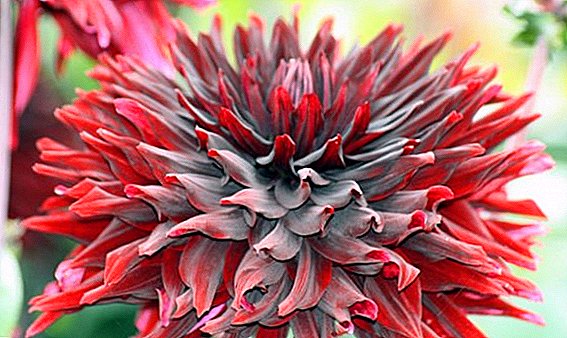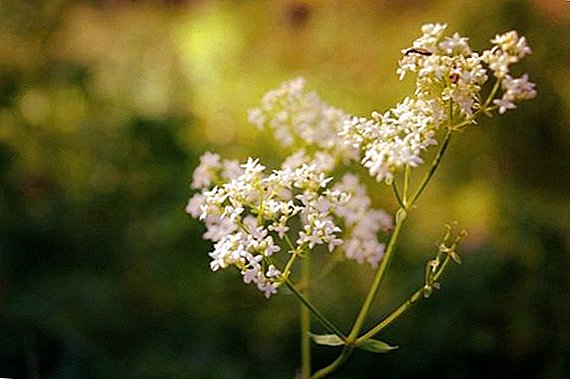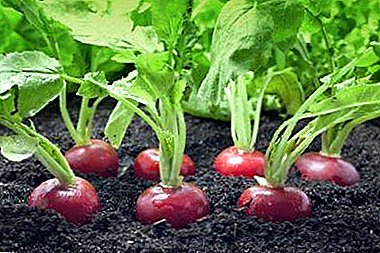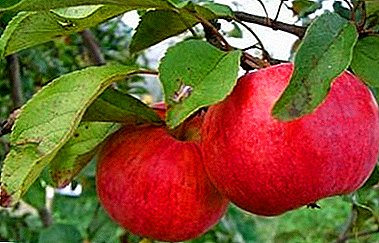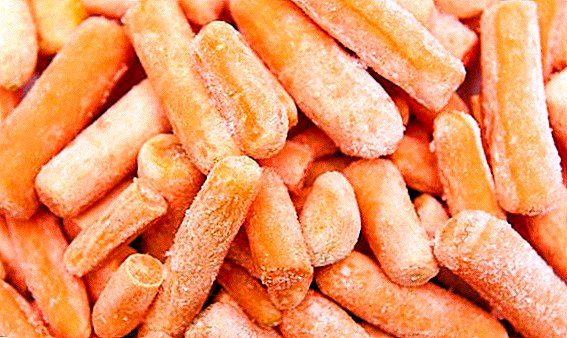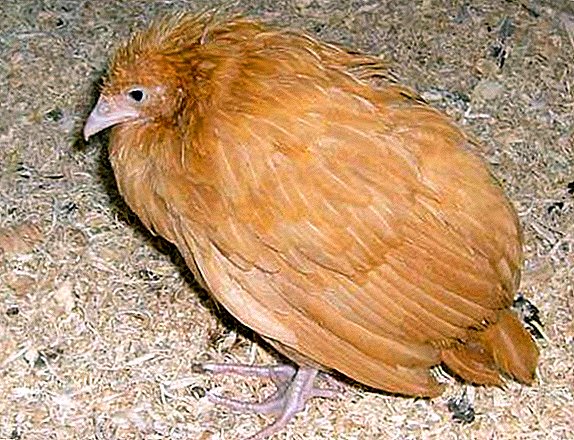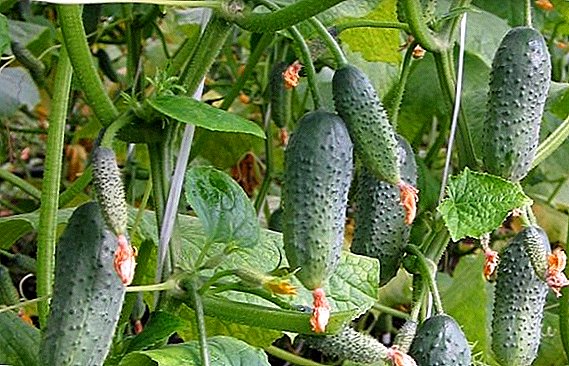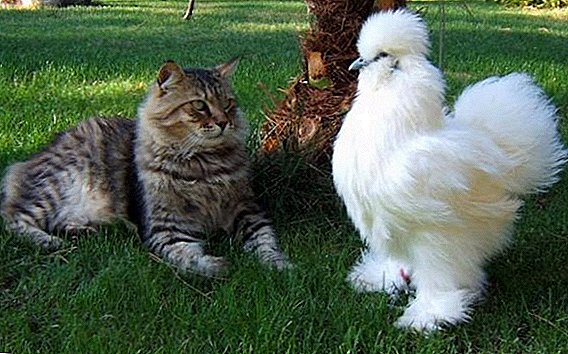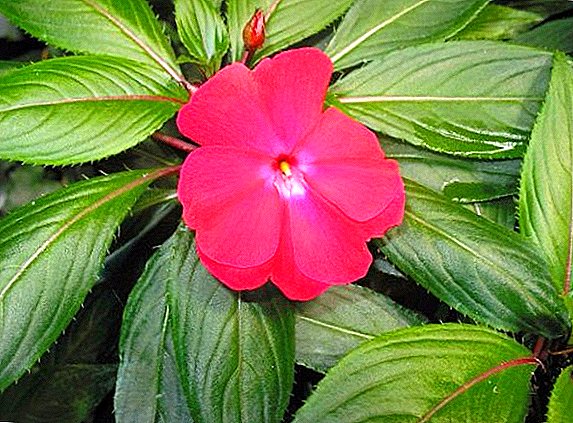 Impatiens balsam - a houseplant habitual for all of us since childhood. The Latin name Impatiens is translated as “touchy”, because the balsam seeds scatter in different directions if you touch them. Usually this flower is associated with childhood, because almost every grandmother in the house had a “Spark”, as it is called. Balsam is one of the most common members of the Balsamin family (Balsaminaceae), which has more than 600 species. Homeland balsam - tropical and subtropical regions of Africa and Asia. In Europe, the plant first appeared in 1596.
Impatiens balsam - a houseplant habitual for all of us since childhood. The Latin name Impatiens is translated as “touchy”, because the balsam seeds scatter in different directions if you touch them. Usually this flower is associated with childhood, because almost every grandmother in the house had a “Spark”, as it is called. Balsam is one of the most common members of the Balsamin family (Balsaminaceae), which has more than 600 species. Homeland balsam - tropical and subtropical regions of Africa and Asia. In Europe, the plant first appeared in 1596.
Landing balsam: the choice of location, temperature and lighting
Now let's talk a little about balsam room and care for him. One of its names - "Vanka Mokry" - a balsam received because of its "addiction" to moisture. Balsam is an unpretentious plant. It is better to place it in a well-lit place, but in such a way that direct sunlight does not fall on it.
If you do not have a place on the window sill, and you are forced to “plant” a flower in the corner - do not despair, and here it will grow, only it will not bloom so abundantly. In winter, the plant is best placed on the east side, and in the summer to clean the balcony for constant access to fresh air. Do not place the balsam near the convector or the battery, as the flowers may fall off from overly dry air.
 Caring for indoor balsamine also includes the correct and comfortable temperature conditions for the plant. Due to its origin, the balsam is very thermophilic, and the most suitable temperature for it is + 18-22 ° C in summer and + 8-12 ° C in winter. If you follow the recommendations on how to care for indoor balsam, it will delight with its color all year round. This plant begins to bloom in the first year. Balsam is grown not only as a houseplant, but also as a garden.
Caring for indoor balsamine also includes the correct and comfortable temperature conditions for the plant. Due to its origin, the balsam is very thermophilic, and the most suitable temperature for it is + 18-22 ° C in summer and + 8-12 ° C in winter. If you follow the recommendations on how to care for indoor balsam, it will delight with its color all year round. This plant begins to bloom in the first year. Balsam is grown not only as a houseplant, but also as a garden.
Did you know? In England, balsam was called "Diligent Lisa" for the ability to bloom constantly.
Choosing a pot and preparing the soil for planting
Pot balsam growing is better to pick up a little more than the root system of the flower. Over time, when the plant grows in a pot, the crowding will not interfere with abundant flowering. Many are interested in: how to impose balsam? It's very simple, and we'll talk about it. The first component of good growth is the soil for balsamines - it should be slightly acidic, light and fluffy and have the following composition: 2 parts of leafy ground, 1 part of peat and 1 part of sand.
Important! The soil for the flower should not be too fertilized, as this will lead to the growth of green mass, and not color.
 An important component of the soil for balsam is a quality drainage (it is best to use expanded clay). For New Guinea balms, humus or compost can be added to the soil.
An important component of the soil for balsam is a quality drainage (it is best to use expanded clay). For New Guinea balms, humus or compost can be added to the soil.
How often to water balsam, caring for the plant.
Room Balsam does not require much diligence in the care. Watering should be moderate. It is best to water the flower with separated water. If your water is hard, boil it, as the limescale, which can appear from hard water, will lead to diseases and wilting of the plant. Watering balsam is best on the edge of the pot, trying not to fall on the root part.
Did you know? If from time to time to loosen the top layer of soil in the pot, then your balsam flowers will look brighter.
 In winter, watering balsam should be carried out when the top layer of the substrate dries. In summer, the plant needs to be watered more abundantly, but pour off excess water from the pan, as the roots may start to rot due to stagnant water. Balsam is not only beautiful, but also an intelligent plant: it reports a lack of moisture with yellowing leaves.
In winter, watering balsam should be carried out when the top layer of the substrate dries. In summer, the plant needs to be watered more abundantly, but pour off excess water from the pan, as the roots may start to rot due to stagnant water. Balsam is not only beautiful, but also an intelligent plant: it reports a lack of moisture with yellowing leaves.
An important component of balsam care is fertilizing. In the spring, when the flower begins to grow more actively, it is advised to water it with mineral fertilizers once every 2 weeks for a month. In the period of the most abundant flowering balsam should be watered with a nutrient solution consisting of phosphorus and calcium.
Important! As part of feeding for balsam should not be nitrogen, as it "burns through" the root system.
Room balsam also requires moisturizing for proper care: once a week, spray settled water on the leaves and flowers with a spray bottle.
Trimming and transplanting "Vanya wet"
 Pruning balsam is not as complicated as it may seem. Florists recommend pruning in the spring, simultaneously with transplanting. If your plant has grown too much, then the shoots need to be shortened by half, not forgetting to examine it for dried or rotten roots, which are removed at the very base of the rhizome. Balsam can be transplanted once or twice a year. If you were given a flower, or you purchased it yourself in a store, then it is advisable to transplant it immediately. Pour drainage into a prepared pot, then a little ground. Then gently pull the flower out of the old pot, trying not to damage the rhizome, place it in a new pot and cover it with soil, tamp.
Pruning balsam is not as complicated as it may seem. Florists recommend pruning in the spring, simultaneously with transplanting. If your plant has grown too much, then the shoots need to be shortened by half, not forgetting to examine it for dried or rotten roots, which are removed at the very base of the rhizome. Balsam can be transplanted once or twice a year. If you were given a flower, or you purchased it yourself in a store, then it is advisable to transplant it immediately. Pour drainage into a prepared pot, then a little ground. Then gently pull the flower out of the old pot, trying not to damage the rhizome, place it in a new pot and cover it with soil, tamp.
Important! Ph soil should be at the level of 5.5-6.5.
After transplantation, you need to water the plant abundantly and leave it alone. After 2 weeks, you can begin to feed the flower.
Two ways to breed balsam
Many balsam owners are addicted to this flower and think about how to propagate the plant. There are two main ways: seed multiplication and grafting of balsam.
 Seed propagation occurs in this way: for the first planting of balsamic seeds, you must first use a landless mixture, which includes peat, perlite and vermiculite. If you notice pebbles or debris in the substrate, they should be removed. Mixing all the ingredients, the mixture should be soaked with plenty of water and mix again. Pour the seeds on a flat surface, with a wet toothpick "pick up" them and transfer them to the mixture.
Seed propagation occurs in this way: for the first planting of balsamic seeds, you must first use a landless mixture, which includes peat, perlite and vermiculite. If you notice pebbles or debris in the substrate, they should be removed. Mixing all the ingredients, the mixture should be soaked with plenty of water and mix again. Pour the seeds on a flat surface, with a wet toothpick "pick up" them and transfer them to the mixture.
Did you know? In order for you to see which seeds have germinated, mark the places near the plantings with a toothpick.
After all the seeds are planted, they must be sprinkled with a small amount of peat. Then the container with the seeds covered with a film and put in a warm bright place, avoiding direct rays. You need to air the seeds when you see droplets on the top of the container. Seeds germinate from 2 to 4 weeks. At emergence of the first shoots capacity needs to be opened.
And now let's talk about how to propagate balsam cuttings. Before the very process of grafting it is necessary to treat the secateurs (tongs) with alcohol, vodka or any other disinfectant. Cut off the top of the cutting with several internodes, remove the lower leaves. The stalk should be 7–15 cm long, depending on the size of the plant.
Plant the stalk in a mixture of peat, vermiculite and perlite. Pour warm water with a small amount of potassium permanganate. Usually they are "accepted" in 5-7 days. Cuttings that are well-rooted, can please you with flowering in the first season.
In order to balsam room pleased you for many years, care should be comprehensive and timely.


